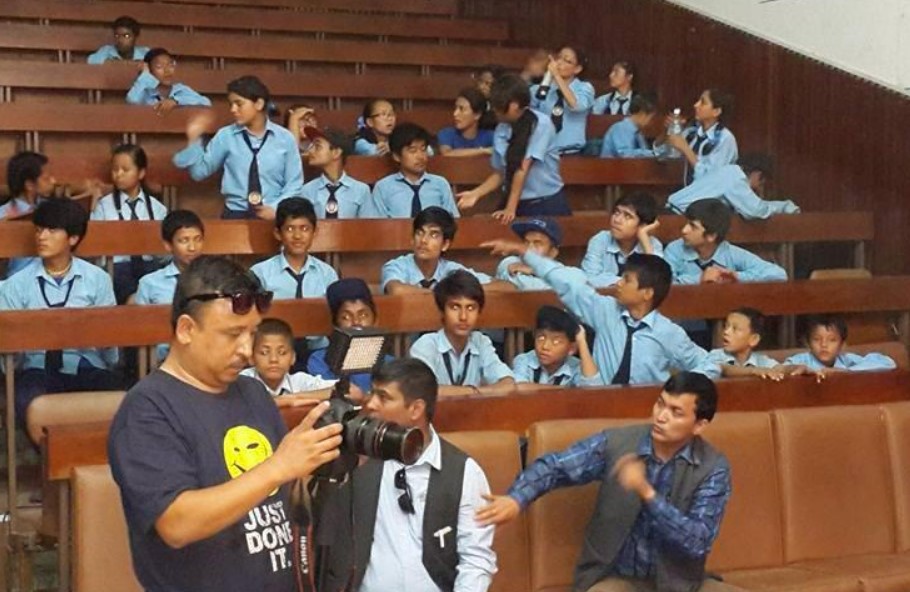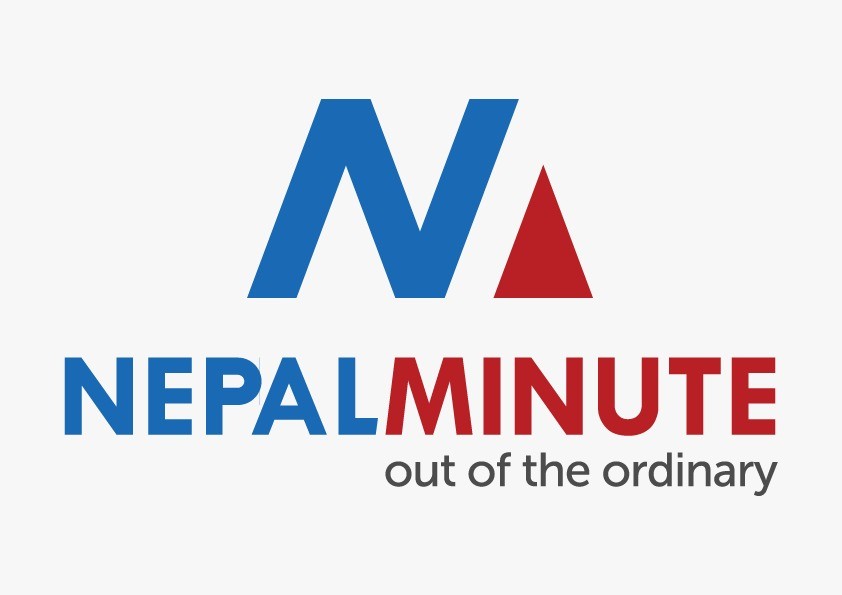Education

Sushil Darnal
Himal Guragain, a hearing-impaired boy, has been pursuing a Bachelor's Third Year course at the Central Campus for the Deaf in Naxal, Kathmandu.
After completing his Grade 12, he wanted to enroll in an IT or accountancy programme. But his school does not offer such electives. People with hearing impairments like Guragain cannot study more subjects at other colleges. The Central Campus for the Deaf is the sole college for people with hearing impairments.
"Our college has a single, exclusive course of study. I considered majoring in computer science or accountancy. But our campus curriculum lacks these streams," Guragain said.
He contends that few Nepali colleges provide limited fields in an environment with over 100,000 sign language-related words and over 5,000 sign language vocabularies. Deaf people like him are worse off.
"I had to go to Kathmandu to get a higher education because neither my village nor any of the nearby towns had a college that taught deaf people," he said. "It is challenging for us to survive in Kathmandu. People who come from poor families have a harder time."

A dearth of qualified and experienced teachers to instruct hearing-impaired students in topics such as computer technology and accounting has been a cause for concern, he said.
"Teachers should be proficient in sign language and have the ability to interpret the facial expressions of hearing-impaired students. However, the majority of schools that offer those courses lack qualified instructors," he said.
He said each class for the nine subjects on the curriculum lasts 45 minutes. "But 90 per cent of the students can't understand the lessons. They take time to understand," he said.
Rabita Deula, who goes to the same college as Guragain, has the same problem. They are having trouble understanding because there are not enough skilled teachers and translators who can speak their language.
A report from the National Federation of the Deaf Nepal (NDFN) says that across the country, 6,380 hearing-impaired students and 204 deaf and blind children go to 22 special schools and 174 integrated schools.
Young children who are deaf or blind need to learn through alternative means, such as touch, taste, smell, and movement. Sign language and bilingual instruction are necessary for those with hearing impairments.
According to the 2011 census, there are 88,743 hearing-impaired people in the country. The Constitution of Nepal says that each Nepali community has the right to education in their mother tongue, and schools should be built and run for them. It also guarantees free education at primary and secondary levels and scholarships for higher education.
The government has set up separate testing and grading systems for people with disabilities based on their financial conditions, geographical locations from school, and the severity of their disabilities.
However, they are hampered in their pursuit of education due to lack of access to these resources and their unwillingness to actively engage in the learning process.
The government has mandated that private educational institutions give free education to these students, but its execution remains a challenge. The Act relating to the Rights of Persons with Disabilities and the accompanying Regulations, 2077 BS has guaranteed scholarships up to the Bachelor's level for children of hearing-impaired parents. The National Medical Education Act of 2075 BS and the National Medical Education Regulations of 2077 BS also provisioned 10 per cent scholarships to marginalised communities.

The NDFN has been pushing for people who are deaf or hard of hearing to get an education in their medium language and for sign language to have an extensive vocabulary and grammar. Other demands include managing interpreters for them in colleges and ensuring they are welcomed and accepted by them.
Around the world, people use 138 sign languages, which are used in 300 different ways. In 1992, sign language was recognised for the first time in the world. So far, 61 countries have given sign language the right to be used in their constitutions, laws, and rules.
The Language Commission in Nepal has suggested that the government promote sign language.
According to the National Education Policy, 2076 BS, children with disabilities should get appropriate educational opportunities through special and inclusive education based on their needs and the principle of inclusiveness. It has provisioned scholarships, educational materials and other management for children who are deaf or hard of hearing.
The federation General Secretary Santosh KC said factors like variation in 'local sign language, failure to use substantial vocabulary in using sign language, thus disseminating otherwise message in signalling subject codes by the speaker, and hearing related problems in learning activities had been a drawback.
Stating that words signalled are not substantial for higher education, Rishiram Devkota, who teaches at the Central College for the Deaf, stressed the need for making some available words meaningful. There should not be a deviation in signalling words, and there should be the habit of using a sign language dictionary. Similarly, there should be clear pictorial signs in the dictionary, he viewed.
Sign languages are rarely used in math, physics, and social sciences. According to him, the trend is to use sign language exclusively in learning and teaching and to use limited visual materials, technology, and online learning and teaching activities. He noted that although hearing-impaired persons have the right to quality education, they don't obtain it due to society's view of them, a lack of inclusive education workers, and teachers' inability to help with learning and teaching.

Sign language has grown in Nepal since 2037 BS after the formation of the Deaf Club and the Kathmandu Association of the Deaf. It is thought that the campaign to organise deaf people began when Italian tourists saw and named a group of deaf people in Kathmandu's Basundhara neighbourhood.
Nepali sign language was created by a group of people who are hard of hearing. The Nepali sign language dictionary has been published seven times since it first came out in 2052 BS. It has 4,700 words in it.
According to NDFN President Kedar Prasad Adhikari, some factors have been a cause for concern, including a lack of government initiatives to make any policies and rules regarding sign language, confusion about which ministry is responsible for developing sign language, a lack of curriculum, and reliance on donors to provide training for related teachers.
- RSS






